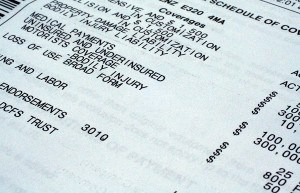Verisk Analytics estimates that personal lines automobile insurers face at least a $29 billion annual problem from premium leakage—omitted or misstated underwriting information that leads to inaccurate rates.
According to the Verisk report, sources of personal auto premium leakage in 2016 include:
- unrecognized drivers – $10.3B
- underestimated mileage – $5.4B
- violations/accidents – $3.4B
- garaging – $2.9B
- identity exceptions – $2.8B
- other – $4.1B
The data analytics company estimates this type leakage amounts to 14 percent of premium.
At the same time, insurers are contending with tightening margins on the one hand and competitive pressure to grow market share and boost retention on the other.
The problem appears to weigh heavily on the minds of insurance leaders. More than 80 percent of respondents to a Verisk-led industry survey were at least “moderately concerned” about premium leakage, with nearly half “very concerned” or “extremely concerned.”
These findings are explored in The Challenge of Auto Insurance Premium Leakage, a new Verisk Insurance Solutions Innovation Paper based on the findings of two recent Verisk research initiatives. The 2016 Verisk Auto Insurance Premium Leakage Survey explored insurers’ concerns, programs, and plans regarding premium leakage. Verisk also conducted a client analysis for 82 insurers split evenly between the standard and nonstandard markets.
The insights from those initiatives provide readers with a deeper look at premium leakage from multiple angles:
- Dimensions of the problem — how the issue skews pricing and how concerned insurers are about it.
- Best practices — successful strategies for bringing leakage under control.
- Innovations — cutting-edge tools to enable a healthy balance of growth, retention, and profitability.
There are a number of reasons why leakage happens, according to Verisk. The misinformation could be due to dishonest insureds or agents, errors and changes in a policyholder’s risk profile.
According to the premium leakage study, 70 percent of auto insurers monitor premium leakage. Among insurers that currently monitor premium leakage, 86 percent monitor at point of sale and 84 percent at renewal.
Predictive analytics is one way to identify sources of premium leakage, according to the report’s authors.
Download The Challenge of Auto Insurance Premium Leakage at www.verisk.com/premium-leakage
Was this article valuable?
Here are more articles you may enjoy.


 ‘Dream Is in Sight:’ Chamber, Reinsurers, Insurers Urge Florida to Stay the Course
‘Dream Is in Sight:’ Chamber, Reinsurers, Insurers Urge Florida to Stay the Course  NYT, Chicago Tribune Sue Perplexity AI as Copyright War Rages On
NYT, Chicago Tribune Sue Perplexity AI as Copyright War Rages On  Truckers Who Fail English Tests Get Pulled Off Roads in Trump Crackdown
Truckers Who Fail English Tests Get Pulled Off Roads in Trump Crackdown  Tricolor Trustee Plans to Sue Founder for Auto Dealer’s Collapse
Tricolor Trustee Plans to Sue Founder for Auto Dealer’s Collapse 